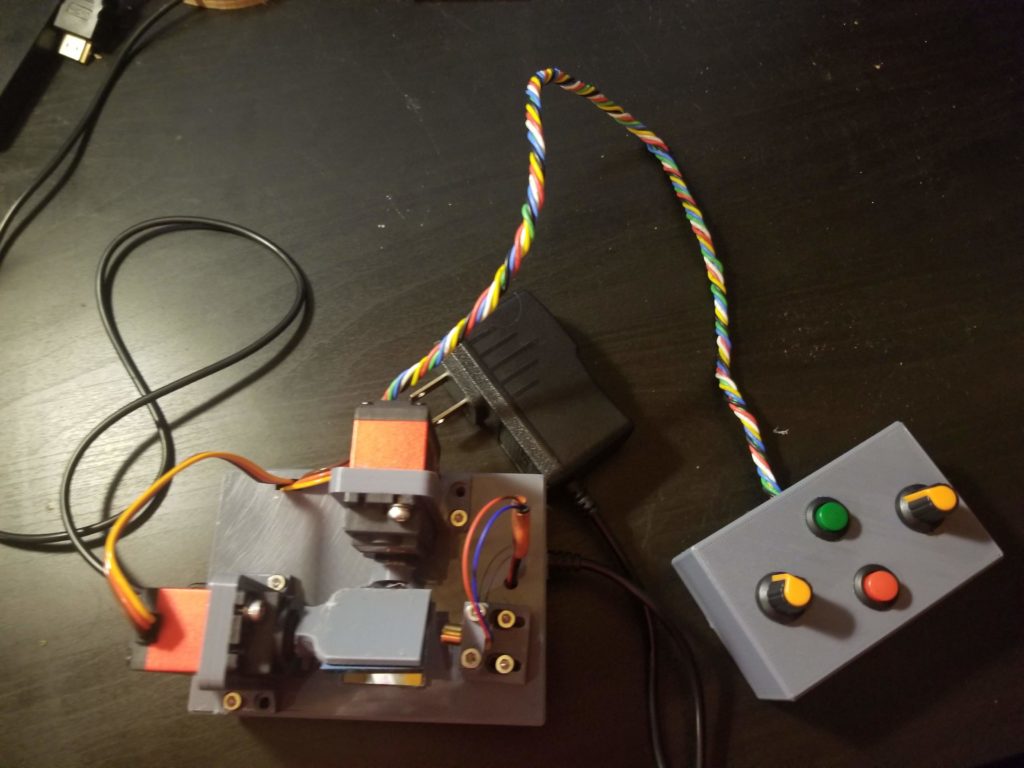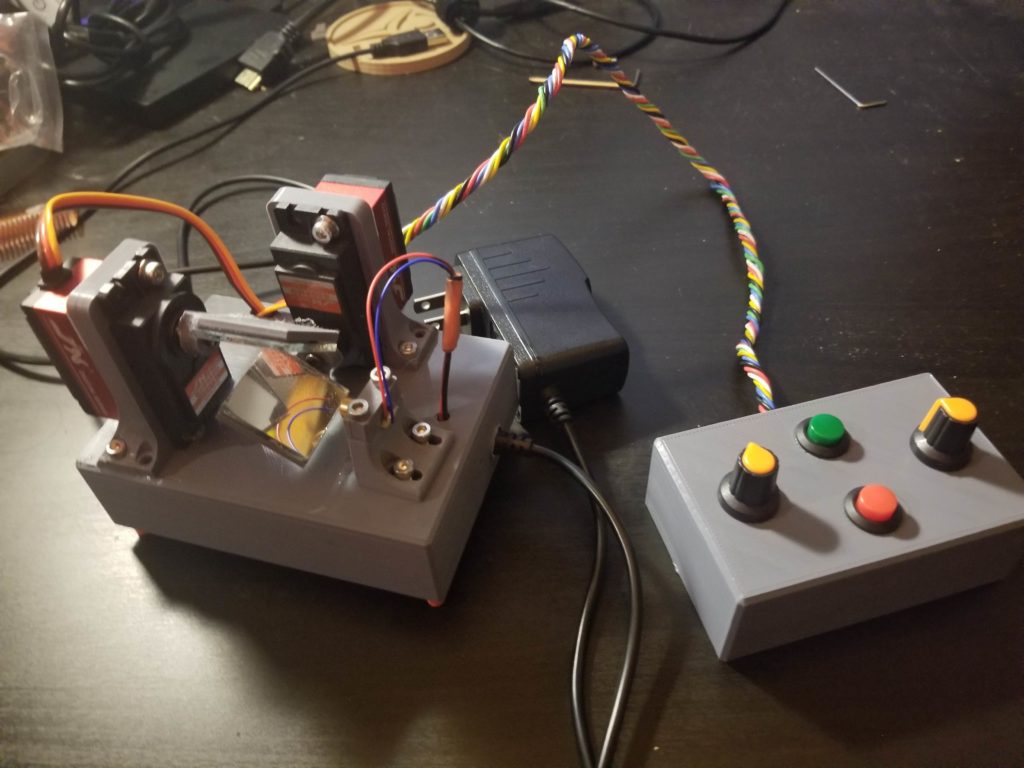The final week working on the Laser Etch-a-sketch project involved the most work and persistence. I continued to use the same mechanical components including the two Fast-speed servos, an Arduino Nano, a Mini-Maestro 18 for driving the servos, two potentiometers, and two pushbuttons. As I noted last week, the y-axis potentiometer is now fully working therefore it is capable of drawing on the x and y-axis. As the mechanical components stayed the same and the potentiometer was fixed, the code has greatly changed after hours of experimentation.
The issues I found with the code last week was not being able to draw geometric shapes, not being able to record and recreate the users’ input, and not drawing the laser fast enough to create a persistence of vision effect.
I was able to fix the geometric shape issue by creating a function that delayed the servo angle output dynamically and using for loops. The dynamic delay function calculates the change in position and multiplies that change by a constant so that it outputs a delay in milliseconds. As per someones’ suggestion last light art class, I added for loops in my code so that the code would execute faster, therefore creating a cleaner output.
I was unable to fix the recording of the users’ input due to issues that I believe to be limitations in the Arduino Nano’s hardware. My method to record the users’ input was to create an array and append the current position after the position has changed above a certain threshold. I could not append the users’ input to an array for some reason that is unknown to me at this time. As a compromise, I will be able to take a 30-second long exposure with my phone so that we are able to view what the user has drawn manually.
I was also unable to fix the speed issue with the servos therefore not being able to create the persistence of vision effect. Again, I will utilize the long exposure setting with my phone as a compromise.
Overall, I wouldn’t say this project was a failure and I also don’t think this project is a dead end with the current hardware. I believe with more time coding and more experience, I could create the project that I set out to make. Going into this project, I knew I would struggle with the coding side of the Laser Etch-a-sketch as I am studying mechanical engineering but I learned a lot and I had fun.
Below are pictures of the final Laser Etch-a-sketch with the base put on and the wires hidden.



